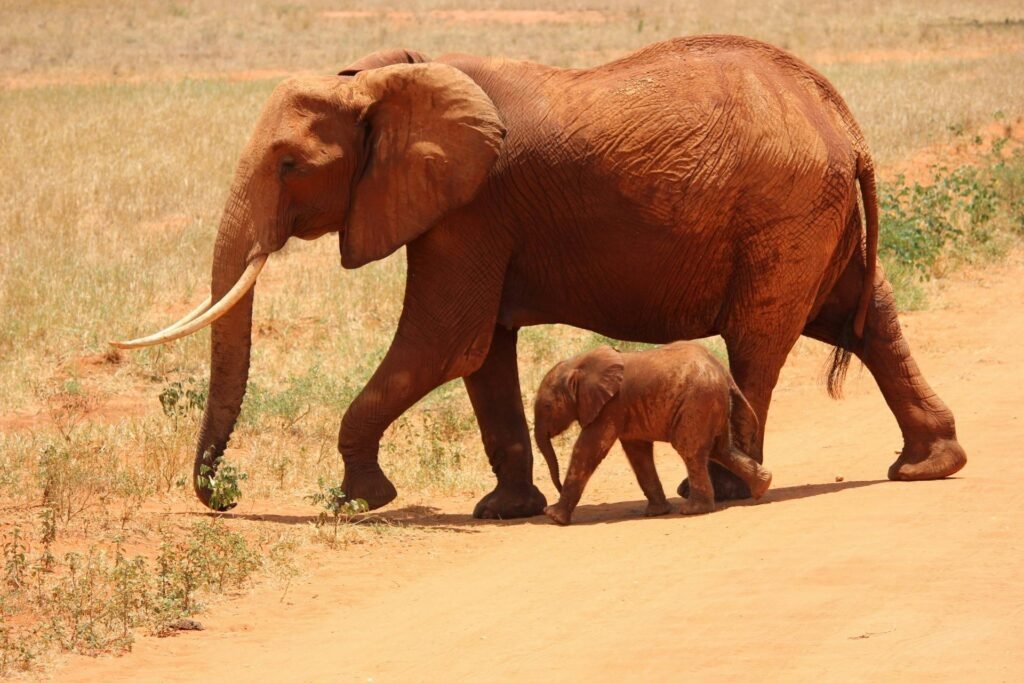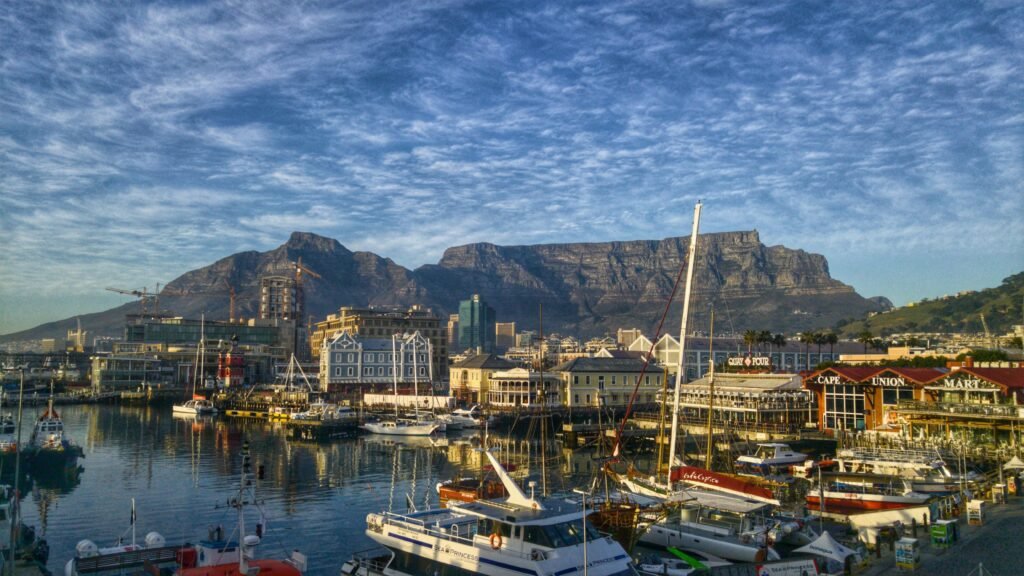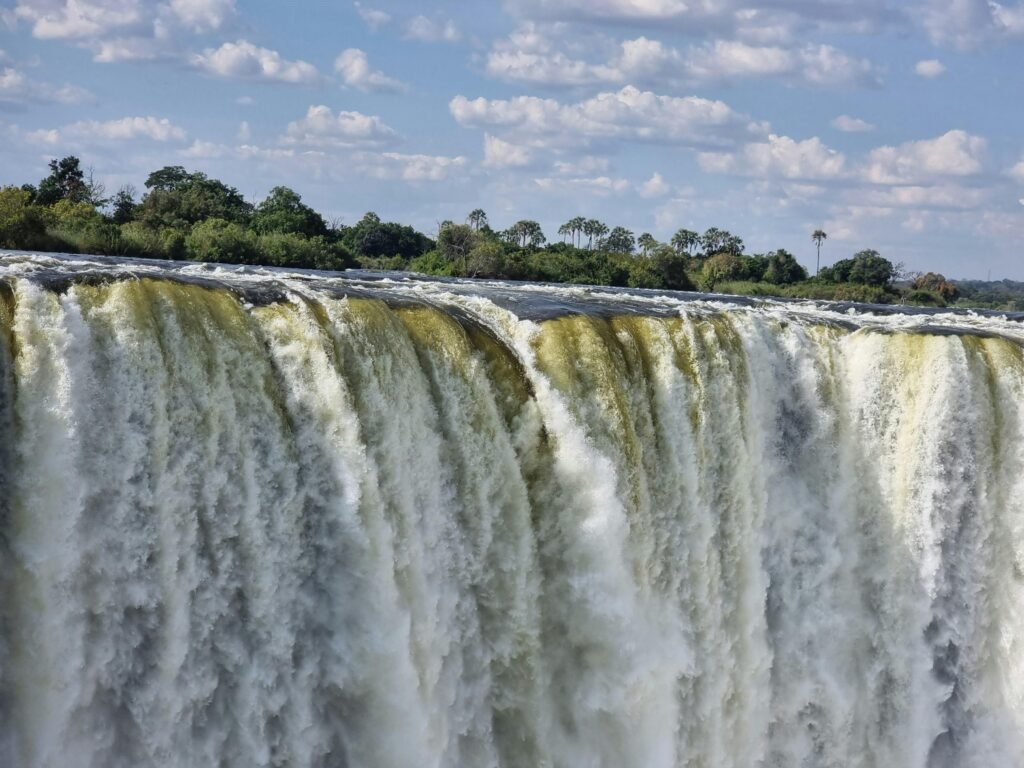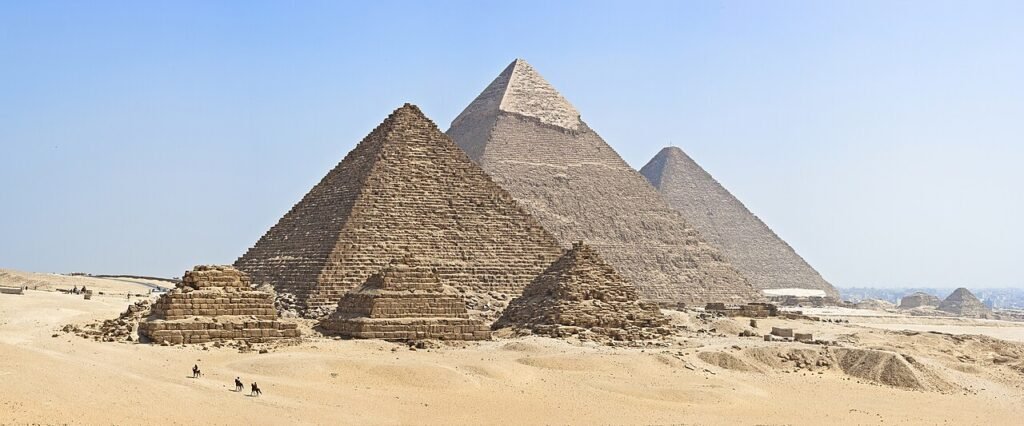
Maasai Mara: Few travel moments rival the first dawn drive in the Maasai Mara. The light skims across golden grass, hot-air balloons drift silently, and somewhere ahead a lioness lifts her head. Whether you’re a family making a once-in-a-lifetime trip, a couple after a wildly romantic escape, or a solo traveller with a camera and big dreams, the Maasai Mara is Africa’s safari classic, easy to combine with the Kenyan coast, surprisingly straightforward from the UK, and endlessly rewarding year-round.
This guide distils what you need to know now: the best times to go (with and without the Great Migration), how the Reserve differs from its private conservancies, the latest on fees and gate times, practical planning from London to the Mara’s airstrips, and sample itineraries you can actually follow. You’ll also find where to stay (from clever value to bucket-list boutique), what to pack, family tips, and how to safari responsibly – plus a few UK tie-ins to keep your wildlife wanderlust alive back home.
A Quick Primer: Where and What Is the Maasai Mara?
Kenya’s Maasai Mara National Reserve sits in the south-west of the country, sharing an unfenced border with Tanzania’s Serengeti. Together they make up one vast ecosystem through which more than a million wildebeest and zebra circulate annually in search of fresh grazing – the Great Migration. The Maasai Mara is famed for big cats (lion, leopard, cheetah), classic open plains scenery, and high densities of wildlife within a relatively compact area.
Beyond the National Reserve, a necklace of community-owned conservancies (Mara North, Olare Motorogi, Naboisho, Ol Kinyei, Lemek, Enonkishu and others) protects additional habitat. These conservancies operate on a low-density model: far fewer visitors, strict vehicle limits, and activities you can’t do in the Reserve (night drives, guided bush walks, off-road when appropriate). They’re brilliant for photographers and anyone who prefers quieter sightings while directly funding Maasai land leases.
Key Facts & Figures (What’s Changed Recently)
- When to go: Wildlife is excellent year-round. The Great Migration typically reaches the Maasai Mara from July to October, with famous Maasai Mara River crossings most common in August–Sept. Long rains fall from March–May; short rains in November.
- Entry fees (2025): Non-resident adults US$100 per day (Jan–Jun) and US$200 per day (Jul–Dec). Non-resident children US$50 (9–17); under-8s free. Tickets are valid for 12 hours (6 am–6 pm); if you depart the Reserve by road later than mid-morning on your last day, you may be charged an additional day. The Mara Triangle (the Reserve’s western sector) is cashless; elsewhere accepts card/cash – always check before you go.
- Opening hours: Gates are usually 6 am–6 pm; no self-driving after dark. Night drives are not permitted in the Reserve, only in conservancies.
- Game-viewing etiquette: Around five vehicles per sighting is the general limit in strictly managed sectors (and in the conservancies), with time caps at busy sightings. Your guide will manage this for you.
- Hot-air balloons: ~1-hour flights at sunrise; generally minimum age 8 and minimum height ~1.2m; pregnancy is a no-fly. Book early in high season.
- Entry to Kenya: Kenya is visa-free but requires an Electronic Travel Authorisation (eTA) for most visitors, including UK passport holders. Apply online a few days in advance.
- Drones: Treated as aircraft in Kenya – permits are complex, and drones are effectively banned in national parks and reserves. Leave it at home.
(Details can change: always reconfirm fees, gate times, and entry requirements close to your travel dates.)
Reserve vs Conservancies vs Mara Triangle: Which Is Right for You?
Maasai Mara National Reserve
- What it’s like: The “big, famous” Mara with open plains, the Mara and Talek Rivers, and abundant game. It’s where you’ll find many classic lodges and access to multiple gates (Sekenani, Talek, Oloolaimutia, Musiara, Oloololo).
- Pros: High wildlife densities; convenient for short safaris; iconic scenery; superb during Migration.
- Watch-outs: Can get busy around crossings and big-cat sightings in peak months; no night drives or walking safaris.
The Mara Triangle (inside the Reserve)
- What it’s like: The Reserve’s western third, managed separately. Fewer lodges, firm control of vehicle numbers, and excellent year-round game (including crossings).
- Pros: Highly organised, strong ranger presence, less crowding at sightings.
- Watch-outs: Cashless payment at gates; accommodation choice is more limited (though quality is high).
Private Conservancies
- What they are: Community land leased to conservancy operators, funding both conservation and Maasai livelihoods.
- Pros: Night drives, guided walks, off-road where appropriate, and far fewer vehicles. Outstanding guiding standards.
- Watch-outs: Slightly higher nightly rates (reflecting conservation levies and low-impact bed caps). Migration herds do flow through, but river-crossing action is inside the Reserve—easily accessed on a day-trip if your camp’s conservancy borders it.
Bottom line: Families and first-timers often enjoy splitting time 2–3 nights in a conservancy + 1–2 nights in/near the Reserve for river access. Photographers and crowd-averse travellers often base entirely in conservancies or the Triangle and day-trip for crossings.
Getting There from the UK (and Within Kenya)
International flights
- From London: Daily non-stop flights to Nairobi (NBO) typically operate from Heathrow with British Airways and Kenya Airways. Flight time is around 8h 40m–9h. Seasonal adjustments and additional UK frequencies do pop up – check schedules when booking.
- Connections onward: You’ll land at Jomo Kenyatta International (NBO); most safari flights depart from Wilson Airport (WIL), ~30–60 minutes across town depending on traffic. Leave ample buffer time.
Nairobi to the Maasai Mara
- By air: The easiest option. Multiple daily scheduled flights (AirKenya, Safarilink, Mombasa Air Safari) take 45–60 minutes from Wilson to various Mara airstrips (Ol Kiombo, Keekorok, Musiara, Serena, Ngerende, Kichwa Tembo, Mara North, Ol Seki, Olare Orok). Book the airstrip closest to your camp to avoid long (and bumpy) transfers.
- By road: 5–6 hours from Nairobi to the eastern gates (Sekenani/Talek/Oloolaimutia), longer to the west (Musiara/Oloololo). Roads are paved most of the way; the last stretch can be rough. It’s a scenic Rift Valley drive, but tiring for small children – consider breaking in Naivasha if self-driving.
Tip for families: If budgets allow, fly in (saves energy) and drive out (to spot village life and viewpoints at an easy pace), or vice-versa.
When to Go: Seasons, Wildlife & Crowd Levels
- July–October (Dry; Migration in the Mara): Peak season and peak crowds around crossings. Expect crisp mornings, dusty tracks, and intense predator action. Book 12–18 months ahead for top camps in August–September.
- November (Short rains): Lush grass returns, migratory birds arrive, rates dip, and crowds thin dramatically. Fantastic for photography; brief afternoon storms are common.
- December–February (Warm, mostly dry): Calmer months with great resident game, cheetah on open plains, and clear skies. Excellent for families over the festive period (book well ahead).
- March–May (Long rains): Fewer vehicles, emerald landscapes, dramatic skies—and some properties close. Expect showers, tricky tracks, and atmospheric light. If you love moody images and don’t mind mud, it’s a rewarding value.
A note on the Migration: It’s a dynamic, weather-driven cycle with no guaranteed dates. Think in windows, not weeks. The Serengeti calving season (Jan–Feb) sits across the border; many UK travellers combine both parks across two countries for the full story.
Top Experiences (Beyond a Classic Game Drive)
- Sunrise hot-air balloon with bush breakfast: Magical in any season. Minimum age/height rules apply; book early in peak months.
- Night drives (conservancies only): Find nocturnal creatures—aardvark if you’re lucky, or lion on the move – under a sky thick with stars.
- Guided bush walks (conservancies only): A sensory reset – tracks underfoot, medicinal plants, bird calls.
- Mara River crossings in season: Bring patience (and a long lens). You might wait hours for a herd to commit… then it all happens in five mesmerising minutes.
- Cultural visits: Meet Maasai hosts on village visits arranged through your camp, or support community projects (schools, beadwork co-ops). Go with responsible operators who ensure fair fees go to communities.
- Photographic safaris: Many camps run specialist photo vehicles with beanbags, or can arrange private use. Ask ahead.
Practical Planning: Tickets, Rules, Health & What to Pack
Fees, tickets & gates
- Buy your Reserve entry at park gates (or it may be included in your camp’s rate). The Mara Triangle is card/mobile-money only (no cash).
- Tickets run 6 am–6 pm on a 12-hour basis. If you’re staying outside the Reserve, you’ll pay each day you enter.
- Self-drivers: carry your passport for identification; keep your receipt to show at gates and checkpoints.
Health & safety
- Malaria: The Maasai Mara is a malarial area – speak to your GP or a travel clinic about antimalarials and strong mosquito bite prevention (DEET repellent, long sleeves at dusk, treated nets).
- Vaccinations: Yellow fever vaccination may be recommended for safaris and required if arriving from (or transiting) a risk country. Check NHS Fit for Travel and your itinerary specifics well ahead.
- Water & food: Camps boil and filter water; many provide refillable bottles. Avoid roadside salads; go well-cooked where unsure.
- Insurance: Ensure your policy covers light aircraft flights, evacuation, and safari activities.
What to pack (and what not to)
- Soft duffel (fly-in luggage limits are often 15–20 kg, including hand luggage).
- Neutral layers: mornings can be cool (10–14°C) at altitude; afternoons are warm.
- Sun kit: hat, high-SPF sunscreen, sunglasses.
- Camera gear: 70–200mm or 100–400mm lenses cover most sightings; a beanbag beats a tripod in vehicles.
- Binoculars: at least one pair per two people – children love “their own”.
- No drones; no single-use plastic bags (Kenya bans them).
Accessibility & family notes
- Many camps can provide child seats, booster cushions, step stools, and lower-sided vehicles on request.
- Tented camps often have zipped doors and steps; ask for ground-level tents and close-by rooms if mobility is a concern.
- Family-friendly camps offer interconnecting tents, kids’ Bush Schools, and shorter game drives.
Where to Base: Mara Areas & Camp Suggestions
(Always verify seasonal opening, minimum ages for activities, and inclusions when you book. The mix below is intentionally varied.)
For first-timers who want “classic Mara”
- Keekorok Lodge (inside Reserve, year-round resident game; large, sociable).
- Sarova Mara (inside Reserve; pool and kids’ facilities).
- Fig Tree Camp (Talek River area; long-running favourite with both tents and suites).
For quieter sightings and extra activities (conservancies)
- Mara North Conservancy: Kicheche Mara, Elewana Elephant Pepper (renowned guiding; off-road and night drives).
- Olare Motorogi Conservancy: Mahali Mzuri (Virgin Limited Edition), Mara Plains (ultra-boutique; extraordinary game densities).
- Naboisho Conservancy: Naboisho Camp, Basecamp Eagle View (superb walking; meaningful community links).
- Ol Kinyei & Lemek: Smaller, great value and authentic feel; look for camps supporting local land leases.
For iconic views & design-led stays
- Angama Mara (above the Oloololo Escarpment; cinematic scenery, A-grade guiding).
- Bateleur & Kichwa Tembo (andBeyond) (private concessions on the edge of the Reserve; polished service).
Clever-value and family-friendly picks
- Basecamp Masai Mara (Talek; strong community and sustainability ethos; family units).
- Mara Explorer / Mara Intrepids (Talek area; reliable game, good for multi-generational groups).
- Rhino Tourist Camp (outside Oloolaimutia Gate) and Mara Explorers (Talek) are simple, budget-friendly bases for self-drivers.
How to choose: If your priority is river crossings, book near the Mara River (Triangle or northern Reserve), Aug–Sept. If you crave privacy and flexibility, centre your stay in conservancies and add a Reserve day trip.
Where to Eat (and how it works)
On safari, your camp is your restaurant, think generous breakfasts after early drives, lunches in the shade, and lantern-lit dinners. Many camps arrange bush breakfasts or private sundowners with horizon-wide views. If you’re outside the Reserve near Talek or Sekenani, you’ll find casual local eateries serving stews, nyama choma (grilled meats) and chapatis; standards vary, so ask your guide for trusted spots. In Nairobi (pre/post safari), the city’s dining scene is superb, from contemporary Kenyan kitchens to excellent Indian and Ethiopian – worth planning a final night to enjoy it.
Sample Itineraries You Can Actually Follow
1) The One-Park Wonder (3 days/2 nights): Perfect First Safari
Day 1 – Fly Nairobi (Wilson) → Mara (Ol Kiombo/Musiara)
- Dawn flight (45–60 min), settle into camp; afternoon game drive on open plains.
- Sundowners watching an elephant along the river.
Day 2 – Full day drive (Reserve or Triangle)
- Early start; work the Mara River loops for cats and (in season) crossings.
- Picnic lunch under balanites trees; return via ridgelines for golden-hour cheetah.
Day 3 – Sunrise balloon or short drive; fly back to Nairobi
- Balloon + bush breakfast (or one last leopard hunt along Lugga lines).
- Mid-morning flight to Wilson; connect to an evening international departure (or overnight in Nairobi).
Why it works: Zero time wasted; great for families or couples with limited days and guaranteed “this is safari” moments.
2) Conservancy + River Focus (5 days/4 nights): Best of Both Worlds
Day 1 – Fly to a conservancy (e.g., Naboisho/Olare Motorogi)
- Afternoon walk with an armed guide; night drive for aardwolf and bat-eared fox.
Day 2 – Conservancy immersion
- Off-road with your guide, unrushed big-cat time; siesta; sundowners on a ridge.
Day 3 – Day trip into the Reserve
- Cross into the Reserve at dawn, loop the Mara River until a crossing builds; late return.
Day 4 – Slow safari day
- Sleep-in, optional village visit or raptor tracking; afternoon photography drive.
Day 5 – Breakfast; fly out
- Optional short hop north to Laikipia or Amboseli for a contrasting second park.
Why it works: Crowd-free sightings plus a focused river day; the flexibility of walks/night drives adds real depth.
3) Safari-and-Sea (7 days/6 nights): The Classic Kenya Combo
Days 1–4 – Maasai Mara (Triangle or conservancy)
- Two full days of game drives; optional balloon.
- Prioritise river loops in Aug–Sept; cheetah country on the plains in Dec–Feb.
Day 5 – Fly Mara → Nairobi → Ukunda (Diani) or Malindi/Watamu
- Afternoon Indian Ocean arrival; check into a barefoot-luxury beach lodge.
Days 6–7 – Coast
- Reef snorkelling, dhow sailing, Swahili seafood and sunset palms.
- Optional day-trip to Lamu (for architecture lovers) or Shimba Hills (forest and sable antelope).
Why it works: Wild mornings, beach afternoons – ideal for honeymoons and school holidays.
Responsible Travel: How to See More and Impact Less
- Pick low-impact camps. Look for Ecotourism Kenya certification, solar power, proper waste management, and published community projects.
- Stay in conservancies where possible. Your nightly conservation fee funds Maasai land leases, wildlife security and habitat restoration.
- Follow your guide’s lead on sighting etiquette, no crowding, engines off when appropriate, never block an animal’s path.
- Leave no trace: Kenya bans single-use plastic bags, and national parks restrict disposable plastics – bring a reusable bottle.
- Support local: Buy beadwork directly from women’s co-ops, tip fairly, and engage with respect.
- Travel off-peak (Nov, Feb–June) for fewer vehicles and just as much magic.
Broader UK Tie-ins: Keep the Safari Flame Burning
Your Mara trip can spark a lifelong love of wild places. Back home, try rewilding-minded escapes and wildlife weekends that echo the safari rhythm:
- Knepp Wildland, Sussex: Dawn safaris for nightingales, storks and purple emperor butterflies; guided drives echo the open-vehicle feel.
- Cairngorms National Park, Scotland: Red deer on high corries, osprey fishing, wildcat conservation – bring binoculars and patience as you would in the Mara.
- Isle of Mull & the Hebrides: White-tailed eagles, otters and summer puffins (boat trips to Staffa and the Treshnish Isles).
- Skomer Island (Wales) and Farne Islands (Northumberland): Puffin photography masterclasses – perfect practice for bird-in-flight skills.
Treat these as training grounds for fieldcraft, respectful viewing and ethical photography – then take those skills back to East Africa.
Frequently Asked: Quick Answers – Maasai Mara
Can I self-drive?
Yes, but first-timers are better with a guide. Tracks can be rough, sightings can get busy, and local knowledge makes a huge difference.
Are children welcome?
Very much so, many camps run Junior Ranger-style programmes. Some activities (walks/balloons) have age limits; check when booking.
What about connectivity?
Most camps offer Wi-Fi in communal areas, but expect patchy speeds. eSIMs work well in Nairobi; the signal is best near villages.
Is the Mara “crowded”?
It can be around river crossings in August–September. Choose conservancies or the Triangle, travel shoulder-season, and go with guides who prioritise etiquette. You’ll be surprised how often you have a sighting to yourself.
The Editor’s Take: How to Build a Trip You’ll Remember
- Decide your why. River crossings? Big cats? Family time in nature? Your “why” chooses your where (Triangle/river vs conservancy) and when.
- Book the guide, not just the tent. Guiding quality defines your days—ask about guide training, private vehicle options, and photo setups.
- Slow down. Four nights in one area beats two-and-two with long transfers. Animals do their thing on their timetable; give them time.
- Add contrast. Two ecosystems in one trip (e.g., Mara + Amboseli, or Mara + Laikipia) or the coast combo delivers richer memories.
- Travel kindly. Choose camps that publish conservation impact, tip fairly, and keep your distance at sightings. The Mara will repay you in spades.
At-a-Glance Planner
- Trip length: 3–7 nights in the Mara; 7–12 nights if adding a second park or the coast.
- Best for Migration: Aug–Sept (but plan in windows, not exact dates).
- Best for value & quiet: Nov, Feb–June (outside Easter).
- Entry: eTA required; apply online a few days before travel.
- Balloons: Book ahead; age/height restrictions and “no pregnancy” rules apply.
- Fees: 2025 non-resident US$100/day (Jan–Jun), US$200/day (Jul–Dec); children 9–17 US$50; under-8s free; 12-hour tickets (6 am–6 pm).
- Gates: Typically 6 am–6 pm; night drives only in conservancies.
- Health: Anti-malarials advised; check yellow-fever guidance on NHS Fit for Travel.
Final Word
The Maasai Mara is popular for a reason: it delivers the full safari story, predators, plains game, and big skies in a compact, well-run, and easily reached package. Plan smartly (area choice, time of year, a guide you trust), think slow, and give yourself space for serendipity. Whether you’re watching cheetah cubs tumble or sipping tea as balloons float past your veranda, the Mara is that rare place where the postcard moments actually happen.


